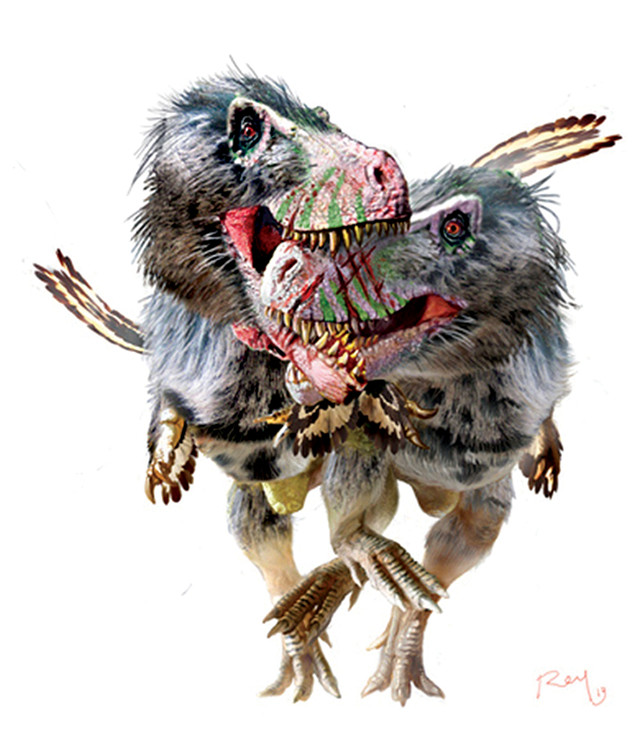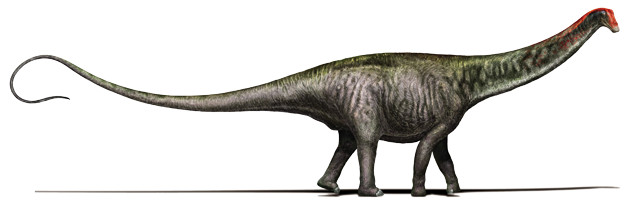
by Mary Caperton Morton Thursday, July 16, 2015

An artist's rendering of two Daspletosauruses in combat. Credit: Luis Rey.
Two of the most recognizable dinosaurs are getting image makeovers. According to recent research, tyrannosaurs weren’t only fearsome predators with a taste for other species, but also may have been cannibals; and Brontosaurus, long thought to be obsolete — as a distinct genus at least — may be making a comeback.
Distinctive tooth marks found scarring the bones of a young Daspletosaurus — a tyrannosaurid that lived about 75 million years ago, nearly 10 million years before its more famous relative Tyrannosaurus rex arrived on the scene — could have been left by another of its own kind, according to a new study published in PeerJ.
By studying the pattern, spacing and shape of puncture marks on the skull, found at Dinosaur Provincial Park in Alberta, Canada, the team, led by Dave Hone of Queen Mary University of London, concluded that the 6-meter-long Daspletosaurus had been bitten by another tyrannosaur, possibly another Daspletosaurus, in a fight. The scarred animal likely survived that encounter — the marks show signs of healing — but postmortem bite marks along its jaw suggest the carnivore became a meal for yet another tyrannosaurid after it died. The find adds to the body of fossil evidence that tyrannosaurs may not have been strict predators, but also scavengers.
The name Brontosaurus, meaning “thunder lizard,” was coined in 1879 by the famous paleontologist Othniel Charles Marsh based on an impressive 22-meter-long specimen that was put on display in the Great Hall of Yale University’s Peabody Museum of Natural History, where it still presides. But in 1903, brontosaurs were determined to be indistinguishable from the earlier-named apatosaurs, dooming the name Brontosaurus to obsolescence in the scientific literature.

Brontosaurus — as a genus distinct from Apatosaurus — is back! Credit: ©Davide Bonadonna, Milan, Italy, CC BY-NC-SA 2.0.
But a new 300-page study — also published in PeerJ — in which scientists analyzed 477 physical features from 81 sauropod specimens belonging to the diplodocid family, shows that at least three brontosaur species do exist. The original specimen — deemed different enough from apatosaurs to warrant its own classification — was redubbed Brontosaurus excelsus. And examples of its close relatives, B. parvus and B. yahnahpin, are found in various museum collections around the world. The researchers, led by Emanuel Tschopp of the New University of Lisbon in Portugal, also found evidence of an additional, new genus within the diplodocids, which they called Galeamopus.
The discoveries of many new specimens in recent years made it possible for the team to undertake the comprehensive analysis. “Our research would not have been possible at this level of detail 15 or more years ago,” Tschopp said in a statement. “In fact, until very recently, the claim that Brontosaurus was the same as Apatosaurus was completely reasonable, based on the knowledge we had.”
© 2008-2021. All rights reserved. Any copying, redistribution or retransmission of any of the contents of this service without the expressed written permission of the American Geosciences Institute is expressly prohibited. Click here for all copyright requests.